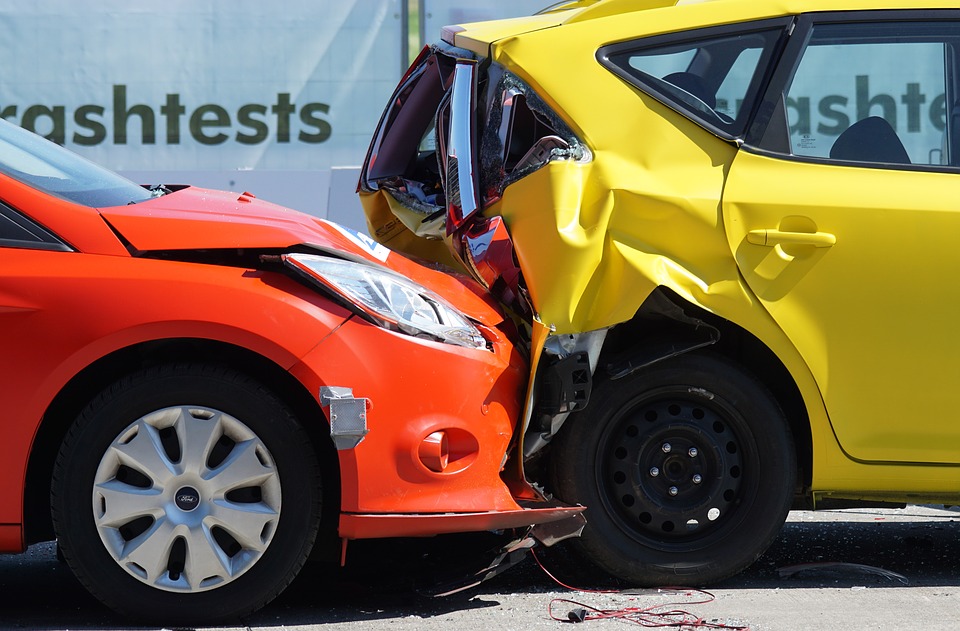On May 16th, 2017, a vehicle was rear-ended on East Stewart Avenue in Flint, Michigan. As reported by MLive, in the vehicle was an 8 month year old infant, who sadly died after suffering critical injuries in the accident. Micah Kent, the young infant, was reportedly in critical condition and was rushed to the Hurley Medical Center, however, the injuries he sustained proved fatal. The vehicle carrying the baby was a 1997 Mercury Sable, and it had been hit from behind by a man driving a 2002 Saturn SL2. Police have reported that they believe the driver was under the influence of drugs and alcohol during the crash. It was not stated how the baby was riding in the vehicle or if a car seat was used.
Stories like this are heartbreaking. Infants are highly susceptible to injuries from car crashes because their spines are still developing and their heads are still large relative to their bodies. A baby’s neck and spine are not strong enough to sustain the force of a car accident without the proper protection of a car seat. Child car safety experts tell parents to always make sure a car seat is rear-facing for infants under the age of two. That is, the car seat is facing the backside of the vehicle.
The Issue With Rear-Facing Car Seats
Child car safety experts tell parents to face car seats toward the back of the vehicle because an impact to the front of the car is the most common type of car crash in America. Per The Washington Post, of the infants under the age of one killed in collisions between 2005 and 2009, one third were involved in frontal or offset crashes while only 15% were killed in rear-end crashes. Facing a car seat to the back of the vehicle can keep the baby’s neck and spine straight while the car seat eliminates whiplash from the crash.
Again however, this safety measure is intended to protect babies from crashes to the front of the vehicle. As evidenced from the tragic story above, babies can face severe risks from rear-end collisions as well. The issue is that car seat manufacturers tend to read statistics like the ones given by The Washington Post and focus on creating safety measures for frontal crashes because they are the most common. As a result, they overlook the risks associated with infants in rear-end collisions.
The Washington Post also outlined an experiment and study published by the Journal of Traffic Injury Prevention. The experiment depicted the impact of a rear-end collision with a car moving 30 mph carrying an infant-sized dummy sitting in a rear-facing car seat. The experiment showed the car seat lurching toward the back of the car and the dummy’s head colliding hard with the back seat. The car seat researchers who conducted the experiment recognized that a car colliding with another vehicle in reverse at 30 mph is unlikely, but they were nonetheless surprised by the force of impact absorbed by the infant dummy’s head. The child car safety experts, however, were more concerned that their findings would scare parents into thinking rear-facing car seats were not the safest option. They made sure to specify that babies should remain in rear-facing style. The experts intentions for the study were not to show that babies are unsafe facing the back of vehicles, but rather that rear-facing car seats could be made safer.
No Car Seat is Crash Proof, But Rear-Facing Car Seats Are The Best Option
Rear-facing car seats, as opposed to forward-facing, are the best option for infants up to the age of two. As stated above, frontal or offset crashes are the most common type of crash. Rear-facing car seats have been designed to mitigate the force of these frontal crashes and stop any whiplash from occurring. Additionally, the most common type of rear-end crash occurs when the car is moving between 5-10 mph. Although whiplash can still be felt at these speeds, it is more important to focus on reducing the impact of frontal crash that could occur at 30 mph or faster. It is even mandated in three states that infants are remain rear-facing until they reach the age of two. 12 states require babies to sit in rear-facing seats until they are at least one. To ensure an infants rear-facing seat is as safe as possible, parents should secure the car seat through their vehicle's seat belt or L.A.T.C.H. system. Generally, a car seat is secure if it cannot be moved more than one inch in all directions.
Below are more car safety tips provided by the Children’s Hospital of Philadelphia.
Car Safety Tips for Infants
- Your child should be in a rear-facing car seat until the age of two.
- Always put your infant’s rear-facing car seat in the back seat of a car. A baby sitting in the front passenger seat of a car could be fatally injured by the blunt force of an air bag.
- Always have snug safety harnesses at or below your baby’s shoulders. Make sure there is no room to pinch a fold in the harnesses.
- Never place a blanket between your child and the harnesses, and do not dress your baby in bulky clothing that could lessen the snugness of the safety straps. Instead, place a blanket over the harnesses and child.
- Lastly, remember that your child has outgrown his or her’s rear-facing seat if his or her head is touching the top of the car seat. There should be at least one inch between the top of their head and the top of the car seat.
So, the question remains: are rear-facing car seats safe for Infants. The easiest answer is that they are the better of two evils. The rear-facing car seat is the best option for children under two years of age. However, they do not completely ensure an infant's safety, especially from rear-end accidents, but they are safer against the more common frontal car accidents. Hopefully however, the focus for the future of child car safety is not on deciding which type of crash deserves the most attention, but rather, how to make a car seat that can be safe in all car accident types.
The Michigan Law Firm, PLLC is a Birmingham, Michigan personal injury firm. Our firm handles personal injury lawsuits throughout the state. Call 844.464.3476 today to speak to an experienced injury attorney today. We offer free consultations and honest and fair legal representation.










